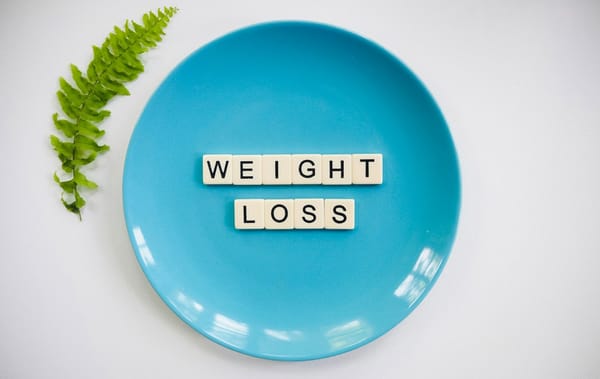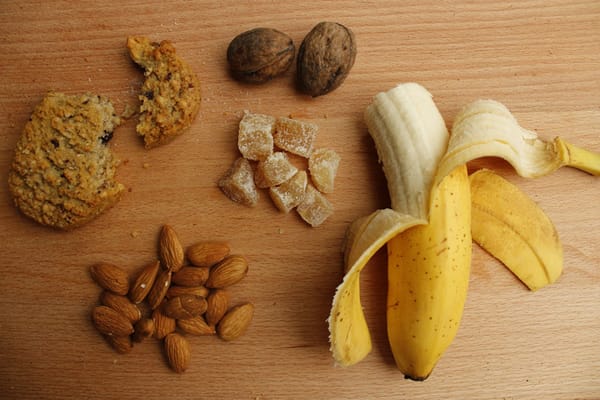Body Recomposition: Building Muscle While Losing Fat

The holy grail of fitness has always been the ability to build muscle while simultaneously losing fat. For decades, conventional wisdom suggested this was impossible for most people, requiring separate "bulking" and "cutting" phases. However, recent research has challenged this notion, showing that body recomposition, the simultaneous process of reducing body fat while maintaining or increasing lean mass, is not only possible but achievable with the right approach.
Understanding Body Recomposition: More Than Just Weight Loss
When it comes to body recomposition its approach stands completely different from traditional weight loss methods. Body recomposition prioritizes changing your body's composition regardless of scale weight as opposed to traditional diets which only seek to decrease scale weight. You can simultaneously maintain your current weight while changing your body composition through fat-to-lean-muscle replacement.
This approach has gained popularity in the exercise and sports nutrition field, particularly in the fitness and bodybuilding sector, as people recognize that body weight alone is a poor indicator of health and physique quality. Recent research has shown that building muscle and losing fat concomitantly is possible even in trained individuals.
Who Benefits Most from Body Recomposition?
Scientific data reveals that specified groups demonstrate superior results in body recomposition programs:
Beginners: New resistance training beginners who build muscle quickly while losing fat simultaneously
Returning trainees: Muscle gains occur effectively in people who have previously trained before taking an extended break
Those with higher body fat: People who carry extra fat fund their body with increased energy reserves to develop muscle tissue
Undertrained individuals: People who have minimally optimized their exercise routine and diet have enormous opportunities for performance enhancement
The Science Behind Simultaneous Fat Loss and Muscle Gain
The physiological understanding of body recomposition provides insights into both how the process functions and the best ways to maximize optimal results.
Energy Balance and Muscle Protein Synthesis
Body recomposition depends on developing optimal conditions for both fat oxidation together with muscle protein synthesis. Building muscles requires sufficient nutrients and energy despite fat loss needing lower calorie intake. The answer requires exact control over body's energy consumption combined with meal timing strategies and macronutrient balance.
In all body recomposition situations training remains the primary force behind achieving results. Modern nutrition optimization alongside progressive resistance training produces substantial muscle development. Training functions as a signal to your body which prioritizes muscular building activities instead of the breakdown process.
Hormonal Considerations
Key hormones determine body recomposition processes:
Insulin: Controls nutrient direction within the body and when timed correctly sends nutrients toward muscle formation
Cortisol: Prolonged high levels decrease muscle development and encourage adipose fat accumulation
Testosterone and Growth Hormone: Responsible for facilitated muscle protein synthesis alongside lipid metabolism
Thyroid Hormones: Impact the body's metabolic rate as well as its energy usage
An effective body recomposition requires proper training combined with nutrition and restorative practices to regulate these hormonal responses optimally.
Nutrition for Body Recomposition Basics
All successful body recomposition programs rest on proper nutrition as their base. The method demands accurate following and steady execution instead of harsh dietary limits.
Caloric Intake: Finding the Sweet Spot
Body recomposition typically calls for eating at maintenance calories or at a slight caloric deficit of 200 to 500 calories instead of strict caloric restriction that cutting phases adopt. This provides sufficient training energy while creating an environment for fat loss.
The strategy you need depends upon where you are starting your transformation:
Higher body fat (>20% men, >30% women): Slight deficit
Moderate body fat (12-20% men, 20-30% women): Maintenance to slight deficit
Lower body fat (<12% men, <20% women): Maintenance to slight surplus
Also Read: How to Build Healthy Eating Habits Without Feeling Restricted
Protein: The Most Critical Macronutrient
Research consistently shows that protein intake is a moderating variable for body recomposition, with higher protein intakes promoting superior results. Adequate protein serves multiple functions:
- Provides amino acids for muscle protein synthesis
- Increases thermic effect of food (burning calories during digestion)
- Promotes satiety and reduces overall caloric intake
- Preserves lean mass during periods of energy restriction
Recommended protein intake: 0.8 to 1.2 grams per pound of body weight (1.8 to 2.6 g/kg). Those with higher body fat can use their goal body weight for calculations. Research based on recent systematic reviews confirms these protein intake levels deliver maximum muscle protein synthesis potential.
High-quality protein sources include:
Lean meats (chicken breast, lean beef, turkey)
Fish and seafood
Eggs and dairy products
Plant-based options (tofu, tempeh, legumes)
Protein supplements when whole foods are insufficient
Carbohydrates: Fueling Performance
Carbohydrates boost training and help with recovery. Quality and timing should replace the elimination of carbs:
Pre-workout: 20 to 40 g of easily digestible carbs 1 to 2 hours before training
Post-workout: 30 to 60 g of carbs within 2 hours of training to replenish glycogen
Throughout the day: Choose complex carbohydrates like oats, rice, potatoes, and fruits
As an example, a 2000-calorie body recomposition plan might incorporate between 150 and 175 grams of carbohydrates per day.
Fats: Essential for Health and Hormones
Dietary fat enables hormone synthesis alongside overall wellness. Budget 20 to 30% of your daily calorie intake to receive your fat sources:
Monounsaturated fats (olive oil, avocados, nuts)
Polyunsaturated fats (fatty fish, walnuts, flaxseeds)
Limited saturated fats (coconut oil, grass-fed butter)
Meal Timing and Frequency
Total daily nutrition matters the most although timing strategies can provide additional improvements:
- Pre-workout nutrition: Combine protein and carbs 1 to 3 hours before training
- Post-workout nutrition: Prioritize protein within 2 hours of training
- Meal frequency: 3 to 5 meals daily based on preference and schedule
- Consistency: Maintain regular eating patterns to support metabolic health
Also Read: Why Meal Timing Might Matter More Than You Think for TDEE Optimization
Training Principles for Body Recomposition
Body recomposition training needs a strategic plan which allocates attention first to muscle development while supporting fat loss progress.
Resistance Training: The Non-Negotiable Foundation
Muscle building and maintenance receive adequate stimulus from resistance training. Some fundamental principles are:
- Progressive Overload: Continuously increase weight, repetition count, or exercise volume over time. Progress signals your body to create additional muscle mass
- Compound Movements: Prioritize exercises that work multiple muscle groups such as squats, deadlift variations, push-ups, bench press, overhead pressing, pull-ups, rows, lunges, and step-ups
- Training Frequency: Target each muscle group 2 to 3 times weekly. Sample splits include full-body workouts 3x/week, upper/lower splits 4x/week, or push/pull/legs performed twice weekly
- Volume and Intensity: Perform 10 to 20 sets for each muscle group weekly while keeping most work in the 6 to 15 rep range at 65 to 85% of your one repetition maximum
Cardiovascular Exercise: Strategic Execution
Body recomposition needs resistance training plus cardiovascular workouts but specific strategy matters. To avoid excessive steady-state cardio that blocks recovery try:
- HIIT: 15 to 25 minute sessions 2 to 3 times weekly to improve cardiovascular fitness without breaking down muscle
- LISS: On non-lifting days, walking, light cycling, or swimming for 20 to 45 minutes supports recovery and burns extra calories without causing too much fatigue
- Metabolic Conditioning: Circuit style resistance work with short rest periods can increase calorie burn and conditioning
Recovery and Programming
Research on older women showed that initial body composition influences training responses, highlighting the importance of individualized programming. Key recovery considerations include:
- 7-9 hours of quality sleep nightly
- 1-2 complete rest days per week
- Stress management through meditation, yoga, or other relaxation techniques
- Adequate hydration (half your body weight in ounces daily)
Implementation Strategies: Uniting All Elements Together
Successful body recomposition demands a methodical system combining nutrition, exercise, and everyday habits.
Establish Your Workout Schedule
Beginner Program (3 days/week):
- Day 1: Full body strength training plus 15 minutes walking
- Day 2: Rest or simple movement
- Day 3: Full body strength training plus 15 minutes walking
- Day 4: Rest or simple movement
- Day 5: Full body strength training plus 15 minutes walking
- Days 6-7: Rest or light recreational activity
Intermediate Program (4-5 days/week):
- Day 1: Upper body strength + 20 minutes HIIT
- Day 2: Lower body strength + 20 minutes walking
- Day 3: Rest or yoga
- Day 4: Upper body strength + 20 minutes HIIT
- Day 5: Lower body strength + 20 minutes walking
- Days 6-7: Rest or recreational activity
Develop Your Nutrition Plan
- Determine your baseline maintenance calorie count through tracking or calculators
- Establish your objective: maintain calories or set a 200 to 300 calorie deficit
- Prioritize protein when planning macronutrients, then adjust carbs and fats
- Optimize meal prep by batch cooking protein sources and vegetables
- Monitor progress with apps or a journal
Supplement Recommendations
Most nutrients should come from whole foods however the following supplements may support recomposition:
- Protein powder to help reach protein targets
- 3 to 5 g of creatine monohydrate daily for increased strength and muscle growth
- Caffeine as a pre-workout for energy and support of fat oxidation
- Vitamin D if deficient to support hormone function and bone health
- Omega-3 fatty acids if fish intake is low to help manage inflammation
Beyond the Scale Weight Monitoring
Body recomposition progress often goes undetected by standard scales. Use multiple assessment methods instead.
Assessments of Body Composition
- DEXA scans provide one of the most precise measures of body fat and lean mass
- Home bioelectrical impedance scales are convenient but less accurate
- Bod Pod air-displacement assessments are available at some clinics
- Hydrostatic weighing measures body composition by submerged weight
Visual Testing and Physical Tracking
- Take progress photos with consistent lighting, clothing, and poses every 2 to 4 weeks
- Measure waist, hips, arms, chest, thighs, and other circumferences monthly
- Note clothing fit as an early indicator of change
- Track strength improvements and endurance gains
Moving Past and Through Plateaus
Expect periods where scale weight is stable while composition improves. Typical indicators of progress include improved clothing fit, strength gains, increased energy, better muscle definition, and improved mood and confidence.
Body Recomposition Challenges with Evidence-Based Strategies
Managing Expectations During Slow Progress
Body recomposition progresses slower than rapid weight loss or fast muscle gain. Expected progress rates:
- Beginners: 0.5 to 2 lb muscle gain per month and 1 to 2 lb fat loss per month
- Intermediates: 0.25 to 1 lb muscle gain per month and 0.5 to 1.5 lb fat loss per month
- Advanced: 0.25 to 0.5 lb muscle gain per month and 0.5 to 1 lb fat loss per month
Dealing with Strength Fluctuations
Strength changes can stem from leverage changes due to body weight, increased training volume creating fatigue, and changes in nutrition timing and composition. Focus on long term trends rather than daily variation.
Social Life and Nutrition
Sustainability requires flexibility:
- Review restaurant menus beforehand to make informed choices
- Prioritize protein-rich options when eating out
- Adjust other meals to accommodate occasional indulgences
Consistency and Burnout Prevention
Sustainable habits lead to long term success:
- Use periodization to vary intensity and avoid monotony
- Prioritize actionable habits rather than perfection
- Build supportive relationships with trainers or training partners
- Recognize progress beyond the scale
Long-Term Success and Advanced Strategies
As you advance, incorporate strategies to optimize outcomes and maintain motivation.
Transition Between Phases
Simultaneous muscle building and fat loss can occur for many trainees but focused phases remain useful when needed.
Consider a cutting phase when:
- Body fat rises beyond acceptable levels
- Strength performance steadily decreases
- Energy levels are chronically low
- Competition or events call for reduced body fat
Consider a dedicated building phase when:
- Men are under about 10% body fat and women under about 16% body fat
- Strength development stalls for several months
- Recovery capacity is declining
- You want to prioritize muscle mass increases
Periodization Methods
- Linear periodization: Increase intensity while decreasing volume across phases
- Undulating periodization: Vary intensity and volume across different days
- Block periodization: Focus on specific outcomes in 3 to 4 week blocks
- Reverse dieting: Gradual calorie increases after sustained deficits
Individual Variability
Genetics influence recomposition success. Factors include muscle fiber type, metabolic efficiency, baseline hormone levels, and individual recovery needs. Focus on personal progress rather than comparisons.
Sustained Achievement Requires a Long-Term Strategy
The path to body recomposition success requires building lasting habits and learning to fine tune nutrition and training as life circumstances change. Keep educating yourself with current research while staying connected to a supportive community.
Body recomposition succeeds because it is a marathon rather than a sprint. Proper nutrition with adequate protein, strategic resistance training using progressive overload, suitable cardiovascular work, and adequate recovery will enable you to build muscle while losing fat. Individual responses vary so experiment and adjust as needed. Stay dedicated, celebrate small wins, and trust that consistent work over time will produce the body composition changes you want.



